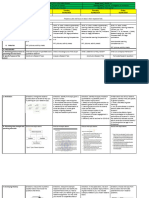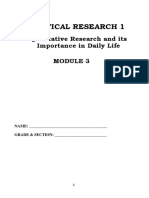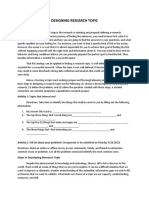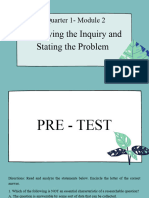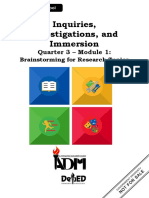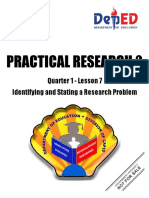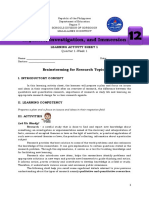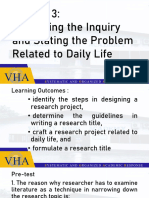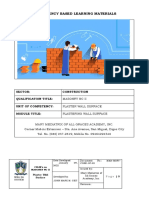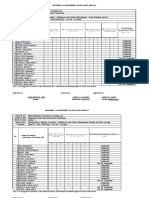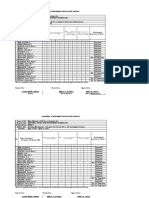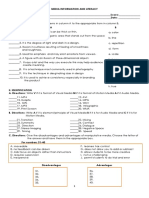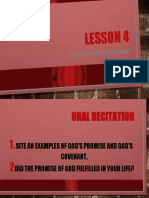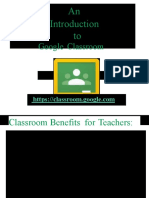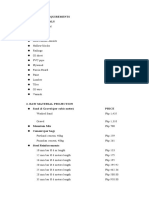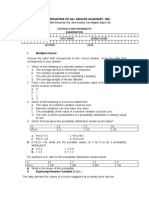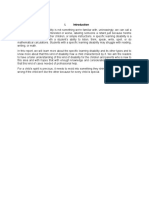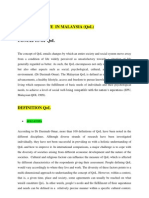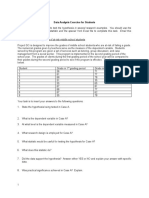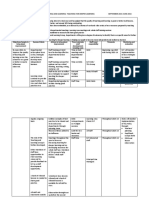0% found this document useful (0 votes)
262 views9 pagesMary Mediatrix of All Graces Academy, Inc.: Cor. Mabini Extension - Sta. Ana Avenue, San Miguel, Digos City
This document provides guidance on writing a research title for a quantitative research study. It outlines basic guidelines, including using an accurate description of the subject and scope, avoiding unnecessary words, and including key variables. A good title is concise yet adequately describes the paper's contents. Developing a title early in the research process helps keep the focus on the intended subject. Background research on the topic is also important before defining the problem and writing the title.
Uploaded by
Wc-mark ChuvachucHuCopyright
© © All Rights Reserved
We take content rights seriously. If you suspect this is your content, claim it here.
Available Formats
Download as DOCX, PDF, TXT or read online on Scribd
0% found this document useful (0 votes)
262 views9 pagesMary Mediatrix of All Graces Academy, Inc.: Cor. Mabini Extension - Sta. Ana Avenue, San Miguel, Digos City
This document provides guidance on writing a research title for a quantitative research study. It outlines basic guidelines, including using an accurate description of the subject and scope, avoiding unnecessary words, and including key variables. A good title is concise yet adequately describes the paper's contents. Developing a title early in the research process helps keep the focus on the intended subject. Background research on the topic is also important before defining the problem and writing the title.
Uploaded by
Wc-mark ChuvachucHuCopyright
© © All Rights Reserved
We take content rights seriously. If you suspect this is your content, claim it here.
Available Formats
Download as DOCX, PDF, TXT or read online on Scribd
/ 9





